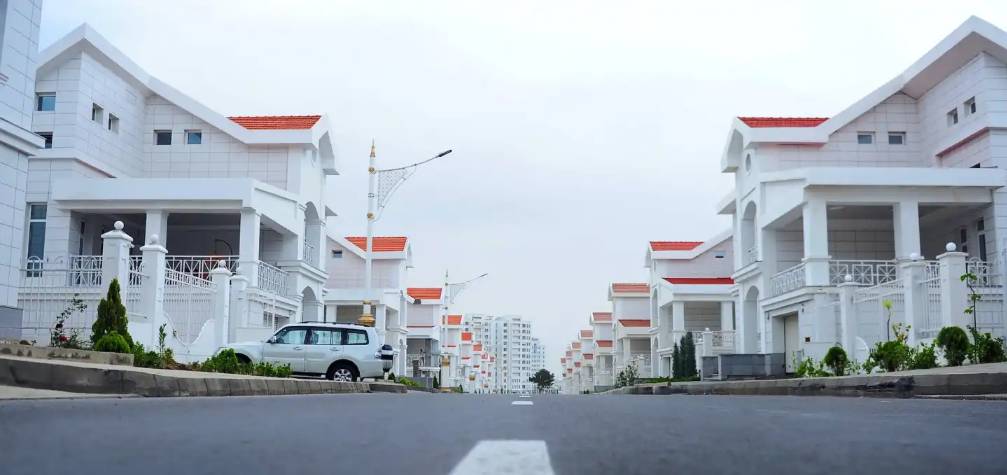Global Real Estate Trends: How Cities Are Changing the Landscape
3 min read
18 Jul 2025
The world of real estate is constantly evolving, shaped by economic, societal, and technological forces. Cities worldwide are at the forefront of these changes, adapting to new trends and challenges that are reshaping the urban landscape. In this article, we'll explore some of the global real estate trends that are transforming cities and the way people live and work.
1. Sustainable and Green Building
Sustainability has become a central focus in real estate development. Cities are increasingly embracing eco-friendly and energy-efficient building designs. Green certifications like LEED (Leadership in Energy and Environmental Design) and BREEAM (Building Research Establishment Environmental Assessment Method) are guiding the construction of sustainable structures that reduce energy consumption and environmental impact. Features such as solar panels, green roofs, and rainwater harvesting systems are becoming common in urban developments.

2. Mixed-Use Developments
Mixed-use developments are gaining popularity in cities worldwide. These projects combine residential, commercial, and recreational spaces within a single development, creating vibrant, walkable communities. The goal is to reduce the need for long commutes and promote a more balanced work-life dynamic. Mixed-use developments often feature amenities like parks, shopping centers, and public transportation hubs, creating self-sufficient neighborhoods.
3. Co-living Spaces
Co-living is redefining the way people think about housing. These communal living spaces offer residents private bedrooms or apartments while sharing common areas like kitchens, lounges, and co-working spaces. Co-living appeals to young professionals seeking affordability, social interaction, and flexible lease terms. Companies like WeWork's WeLive and Common are expanding this trend, providing urban dwellers with convenient and community-focused housing options.
4. Smart Cities and IoT Integration
The Internet of Things (IoT) is revolutionizing urban living by connecting devices and infrastructure to improve efficiency and quality of life. Smart cities leverage IoT technology for traffic management, waste disposal, energy conservation, and public safety. For example, connected traffic lights can reduce congestion, while smart waste bins optimize collection routes. These innovations aim to make cities more livable, sustainable, and responsive to residents' needs.
5. Remote Work and Flexible Spaces
The rise of remote work has prompted a shift in real estate trends. Many companies are adopting flexible work arrangements, leading to increased demand for co-working spaces and remote work-friendly accommodations. Real estate developers are responding by incorporating co-working areas into residential and commercial buildings, creating environments that cater to the evolving needs of the workforce.
6. Transit-Oriented Development
Cities are investing in public transportation infrastructure to reduce traffic congestion and promote sustainable commuting options. Transit-oriented development (TOD) focuses on building residential and commercial properties around transit hubs like train stations and bus stops. These developments encourage the use of public transportation, reduce reliance on private cars, and promote urban density.
7. Affordable Housing Initiatives
Affordable housing remains a critical issue in many cities worldwide. Policymakers and real estate developers are collaborating on initiatives to increase the supply of affordable housing. Strategies include providing incentives for developers to build affordable units, rent control measures, and public-private partnerships aimed at addressing the housing affordability crisis.
8. Adaptive Reuse Projects
Adaptive reuse involves repurposing existing structures for new uses, often preserving historical or culturally significant buildings. This trend promotes sustainability by recycling existing resources and reducing the environmental impact of new construction. Historic warehouses, factories, and even churches are being transformed into residential lofts, offices, and cultural spaces.
9. Resilient Design and Disaster Preparedness
As climate change leads to more frequent and severe natural disasters, cities are focusing on resilient design and disaster preparedness. Real estate developers are incorporating features such as flood-resistant construction, backup power systems, and elevated structures to mitigate the impact of disasters. Additionally, city planning is taking into account climate resilience and long-term sustainability.
10. Health and Wellness-Centric Design
The COVID-19 pandemic has heightened awareness of the importance of health and wellness in urban living. Real estate developers are incorporating features like improved indoor air quality, touchless technologies, and wellness amenities such as gyms and green spaces. These design elements prioritize residents' physical and mental well-being.
Conclusion
Global real estate trends are transforming cities into more sustainable, livable, and adaptable environments. Whether it's embracing sustainability, reimagining housing solutions, or preparing for the challenges of the future, cities are at the forefront of these changes. Real estate professionals, policymakers, and developers are collaborating to create urban landscapes that meet the evolving needs of residents while addressing critical global issues like climate change and affordable housing. As these trends continue to shape the real estate market, cities worldwide are poised for a brighter and more sustainable future.


